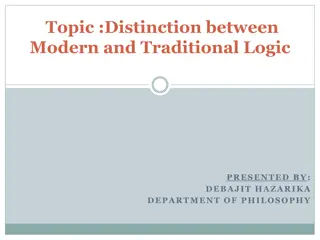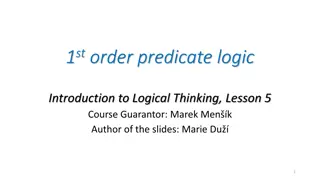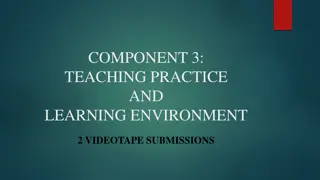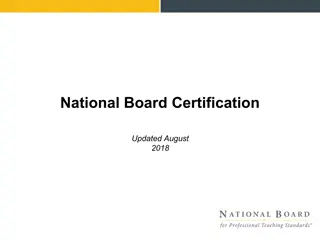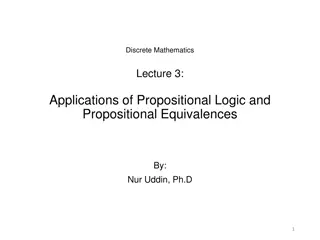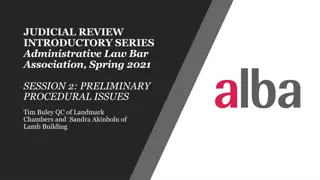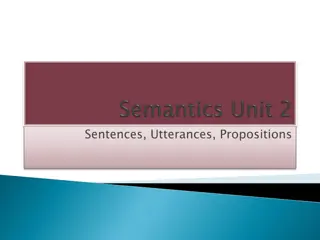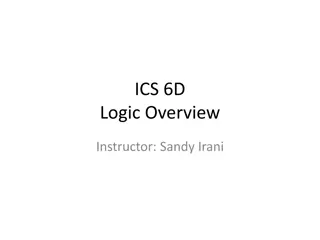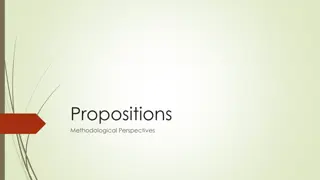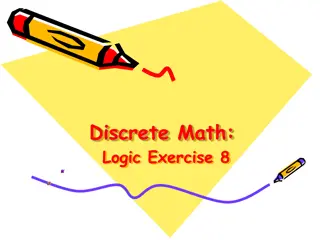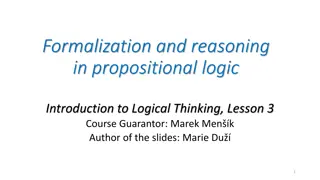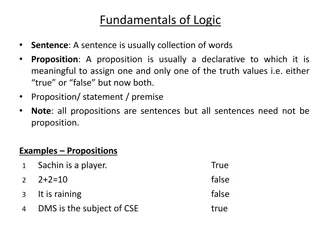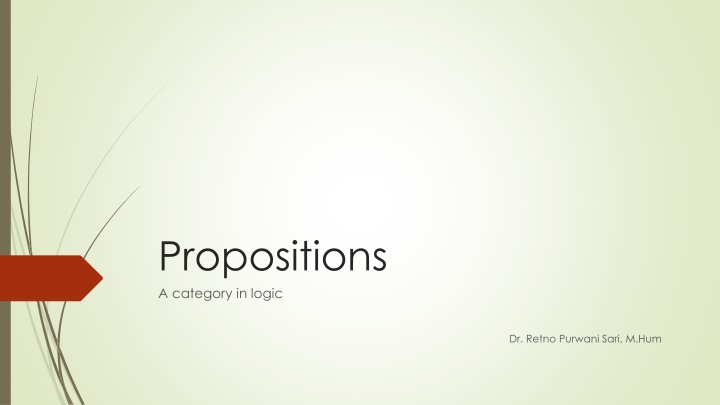
Semantic Class Sharing in Logic
Explore the intricacies of semantic properties and classifications in language, delving into the meaning of linguistic constituents and expressions. Discover how semantic relationships shape our understanding of words and sentences through various cases and examples.
Download Presentation

Please find below an Image/Link to download the presentation.
The content on the website is provided AS IS for your information and personal use only. It may not be sold, licensed, or shared on other websites without obtaining consent from the author. If you encounter any issues during the download, it is possible that the publisher has removed the file from their server.
You are allowed to download the files provided on this website for personal or commercial use, subject to the condition that they are used lawfully. All files are the property of their respective owners.
The content on the website is provided AS IS for your information and personal use only. It may not be sold, licensed, or shared on other websites without obtaining consent from the author.
E N D
Presentation Transcript
Propositions A category in logic Dr. Retno Purwani Sari, M.Hum
Overview Semantic Class
Semantic Perspectives Meaning covers representation of the meaning of every constituent and expression in language, and also of the meaning relationships between them. (Wierzbicka, 1988:1) The basic building block for language is a form paired with its meaning (Allan, 2001:6) lexical item; bundle of semantic properties (Carstairs, 2002:13; Larson, 1998:59) situation/state of affairs expressed in a sentence
Semantic Class Sharing semantic properties Case 1 [+PARENT] [+FEMALE] [+ADULT] [+HUMAN] Mother Entity THING [+PARENT] (all animate beings, natural or supernatural [+MALE] and all inanimate entities; boy, angel, [+ADULT] ghost, stone, galaxy, idea, blood etc) [+HUMAN] Father Entity Nouns
Semantic Class Sharing semantic properties Case 2 [+ RELATING TO PEOPLE] [- GOOD MANNER] [+ASCRIBE TO THING] Imprudent Quality [+ RELATING TO INSTITUTION] [- GOOD MANNER] [+ ASCRIBE TO THING] Impertinent Quality ATTRIBUTE Modifiers (Adjectives, Adverbs) (all those attributes of quality or quantity ascribe to any THING or EVENT: long, thick, soft, rough, slowly, suddenly, few, all)
Semantic Class Sharing semantic properties Case 3 [+ GO THROUGH THE AIR] [+ POSITIONAL CHANGE] [+CHANGE OF STATE] [+ MOTION] Fly Process [+ GO ON FOOT] [+ POSITIONAL CHAGE] [+ CHANGE OF STATE] [+ MOTION] Walk Process EVENT Verbs (all action, change of state, and experiences: eat, run, think, stretch, melt, smile)
Semantic Class Sharing semantic properties Case 4 [+ ADDITION] And Relation [+RELATION POSITED BETWEEN TWO] [+ OPPOSITE] But Relation [+ RELATION POSITED BETWEEN TOW] RELATIONS (all those relations posited between any two of the other semantic units: with, by, because, since, before, therefore, or) Preposition or Conjunction
Summary The relationship between semantic class and grammatical class THINGS nouns, pronouns EVENTS verbs ATTRIBUTES adjectives, adverbs RELATIONS .... conjunctions, prepositions
EXERCISES Define semantic class of each following lexical item 1. crawl 2. balloon 3. cheeky 4. for 5. lousy 6. devil 7. often 8. wisdom 9. always 10. already
Propositions Some state of affairs
Utterances, sentences and propositions Examples 1a. Jim picked up the children 1b. Jim picked the children up 2a. Mary started her lecture late 2b. Mary started her lecture late 3a. Went to the toilet James 3b. Mary the put on hat
Utterances, sentences and propositions 1a. Jim picked up the children 1b. Jim picked the children up They are different sentences 2a. Mary started her lecture late 2b. Mary started her lecture late They are same sentence. 3a. Went to the toilet James 3b. Mary the put on hat They are not English Sentence. However, there are languages, such as Spanish, where word order is less important. 4a. Mary started her lecture late 4b. Mary started her lecture late Pronounced by two different persons are different utterances.
summarize utterances are real pieces of speech, and by filtering out certain types of (especially phonetic) information we can abstract grammatical elements, that is sentences. Then, filtering out again certain types of grammatical information we can get to propositions (Rambaud, 2012)
Definition Another possible definition of proposition (Hurford & Heasley, 1983) is that part of the meaning of the utterance of a declarative sentence which describes some state of affairs. the concept of argument structure
The concept of argument structure Proposition some state of affairs denotes a situation that is stated by the sentence entity or relation among entities The concept of argument (1) the argument structure relates a relation (2) function with a number of arguments
Proposition Structure In propositions, logicians identify verbs as functions with subjects and objects as arguments of the function (Rambaud, 2012:25) Formula Fx (a,b)
Fx (a,b) Proposition: tell (Lucas, lie, Nicholas) verb function arguments Subject or verb
Propositions capture part of the meaning shared with other sentences. (Rambaud, 2012:25) Sentence Realizations: (1) Lucas told Nicholas a lie (2) Did Lucas tell Nicholas a lie? (3) Lucas, tell Nicholas a lie! the statement, the question and the command might be seen to share a propositional element: LUCAS TELL NICHOLAS LIE
Sentence (1), (2). And (3) make the speaker do different things and result in different action of listeners. with proposition: LUCAS TELL NICHOLAS LIE the sentence may function as (1) assert it as a past event (2) question it (3) request someone to perform it As a result, we see that propositions capture only part of the meaning of a sentence.
Exercises Represent formulas for propositions in the following sentences 1. War ended. 2. Mathew broke the glass. 3. Peter was hit by John. 4. John, close your eyes! 5. John rejected me. 6. The city was destructed by someone. 7. Can you give me a hand? 8. John, jumping over the fence, ran, and dove into the lake.
Summary 1. Propositions thus are descriptions of states of affairs which some writers see as a basic element of sentence meaning. 2. This has to do with the logical structure of sentences, which capture the more abstract component of information transmission. 3. The skeleton of information is function and arguments. 4. Function = predicates 5. Arguments take specific roles in proposition structure.





